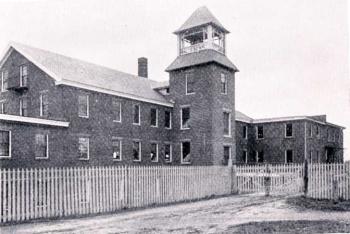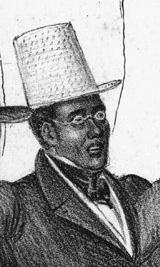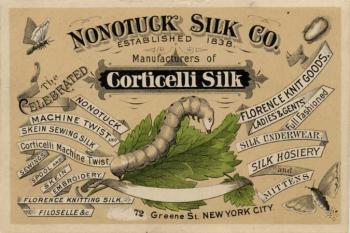The Struggle for Freedom
ABOUT THIS STORY
Reliable secondary sources are necessary to help us make sense of evidence from the past: documents, artifacts, and images called primary sources. Who made the items that we are studying? Why? Where did they come from? What was happening around them? This page is one secondary source that helps make sense of all primary sources in this exhibit.
FROM FARM TO FACTORY
At the end of the American Revolution in 1783, most Americans farmed. Yet by 1840, in New England states such as Massachusetts and Connecticut, farming had fallen on hard times. Centuries of crops had worn out thin, rocky soils. New England farmers looked for other ways to earn a living.
Many farmers had moved to fertile new land in Western states including Ohio and Indiana. Others went to work in new factories. Massachusetts had many factories because its fast-flowing rivers were perfect for water-powered mills. Many New England factories cloth or silk thread from silk. The Stetson family helped start a silk factory in Northampton. Though that factory failed, several others later established a successful silk industry in the city. At the same time, Lowell, Massachusetts grew rapidly around cotton mills, using many young women workers.
FROM SLAVE TO FREE
During these same years, white farmers in Southern states such as Virginia and Mississippi forced African-American slaves to grow cotton and other crops, making the owners very rich. To expand cotton production, plantation owners used more and more slaves. Yet the slaves had no rights. They did not have to right to learn to read, to marry, or even to keep their own children.
Massachusetts courts ended slavery in that state in 1783, but Connecticut still allowed it until 1848. A few Northerners started an Abolition movement to try to end slavery altogether. For decades, southern slave owners and northern Abolitionists argued. In 1861, these struggles finally led to the Civil War.
Some slaves escaped with help from abolitionists. Sojourner Truth was born a slave in New York. She moved to Northampton, Massachusetts where she became a leader of a dedicated Abolitionist community, the Northampton Association of Education and Industry. David Ruggles, a free African-American also moved to Northampton. Ruggles helped Frederick Douglass and hundreds of other slaves to free themselves. Frederick Douglass became the best known African-American in America.
FROM FAILURE TO VICTORY
The NAEI lasted only from 1842-1846. The Association’s silk mill went bankrupt. Slavery and discrimination still dominated African-Americans. Yet in the end, the Association made a great difference for Northampton and for America.
Many members of the NAEI–including Ruggles and Sojourner Truth–remained in the community after the NAEI closed. Sojourner Truth became famous across America for forthright abolitionist speeches. Former NAEI members and other townsfolk continued to support William Lloyd Garrison, Frederick Douglass, and other abolitionists. Together, they changed many people’s ideas about slavery. Former NAEI members also continued to aid escaped slaves. The community even became a destination on the Underground Railroad, and many former slaves settled there. With the Civil War, slavery finally ended.
After the Association closed, one of its founders, Samuel Hill, reorganized the factory as a new business called the Nonotuck Silk Company. He invented a way to make silk thread strong enough to allow the use of sewing machines. Clothes became easier to make and cheaper to buy. The growing community took the name Florence, to make customers think of high quality Italian silks. Corticelli brand silk made Florence wealthy in the late 1800s.
VOCABULARY
- Primary Sources: Letters, records (such as papers from a business), pictures, and objects (such as clothes or tools) from a time in history.
- Secondary Source: Textbooks, books, magazine articles, or web sites written long after the time in history that you are looking at.






